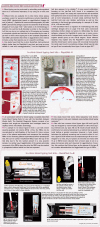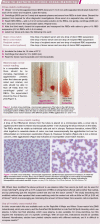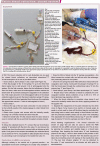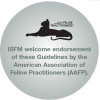2021 ISFM Consensus Guidelines on the Collection and Administration of Blood and Blood Products in Cats
- PMID: 33896248
- PMCID: PMC10741281
- DOI: 10.1177/1098612X211007071
2021 ISFM Consensus Guidelines on the Collection and Administration of Blood and Blood Products in Cats
Erratum in
-
Corrigendum to '2021 ISFM Consensus Guidelines on the Collection and Administration of Blood and Blood Products in Cats'.J Feline Med Surg. 2023 Feb;25(2):1098612X221149363. doi: 10.1177/1098612X221149363. J Feline Med Surg. 2023. PMID: 36735617 Free PMC article. No abstract available.
Abstract
Practical relevance: Blood and blood products are increasingly available for practitioners to use in the management of haematological conditions, and can be lifesaving and therapeutically useful for patients with anaemia and/or coagulopathies. It is important for feline healthcare that donors are selected appropriately, and transfusions of blood or blood products are given to recipients that will benefit from them. Complications can occur, but can be largely avoided with careful donor management and recipient selection, understanding of blood type compatibility, and transfusion monitoring.
Clinical challenges: Feline blood transfusion, while potentially a lifesaving procedure, can also be detrimental to donor and recipient without precautions. Cats have naturally occurring alloantibodies to red cell antigens and severe reactions can occur with type-mismatched transfusions. Blood transfusions can also transmit infectious agents to the recipient, so donor testing is essential. Finally, donors must be in good health, and sedated as appropriate, with blood collected in a safe and sterile fashion to optimise the benefit to recipients. Transfusion reactions are possible and can be mild to severe in nature. Autologous blood transfusions and xenotransfusions may be considered in certain situations.
Evidence base: These Guidelines have been created by a panel of authors convened by the International Society of Feline Medicine (ISFM), based on available literature. They are aimed at general practitioners to provide a practical guide to blood typing, cross-matching, and blood collection and administration.
Keywords: Transfusion; blood type; cross-match; plasma; transfusion reaction; xenotransfusion.
Conflict of interest statement
Séverine Tasker has received financial support for infectious disease research from BSAVA PetSavers, Journal of Comparative Pathology Educational Trust, Langford Trust, Langford Vets Clinical Research Fund, Morris Animal Foundation, NERC/BBSRC/MRC, PetPlan Charitable Trust, South West Biosciences DTP, Wellcome Trust and Zoetis Animal Health. Paulo Steagall has provided consultancy services to Boehringer Ingelheim, Dechra Pharmaceuticals, Elanco, Procyon and Zoetis; has acted as a key opinion leader to Boehringer Ingelheim, Dechra Pharmaceuticals, Elanco, Vetoquinol and Zoetis; and has received speaker honoraria from Boehringer Ingelheim, Dechra Pharmaceuticals, Elanco and Zoetis. The other members of the Panel have no conflicts of interest to declare.
Figures































Comment in
-
Feline blood transfusion: a considered approach befitting a precious resource.J Feline Med Surg. 2021 May;23(5):409. doi: 10.1177/1098612X211007070. J Feline Med Surg. 2021. PMID: 33896247 Free PMC article. No abstract available.
References
-
- Davidow B. Transfusion medicine in small animals. Vet Clin North Am Small Anim Pract 2013; 43: 735–756. - PubMed
-
- Knottenbelt CM, Addie DD, Day MJ, et al.. Determination of the prevalence of feline blood types in the UK. J Small Anim Pract 1999; 40: 115–118. - PubMed
-
- Forcada Y, Guitian J, Gibson G. Frequencies of feline blood types at a referral hospital in the south east of England. J Small Anim Pract 2007; 48: 570–573. - PubMed
MeSH terms
Substances
Grants and funding
LinkOut - more resources
Full Text Sources
Other Literature Sources
Medical
Miscellaneous

